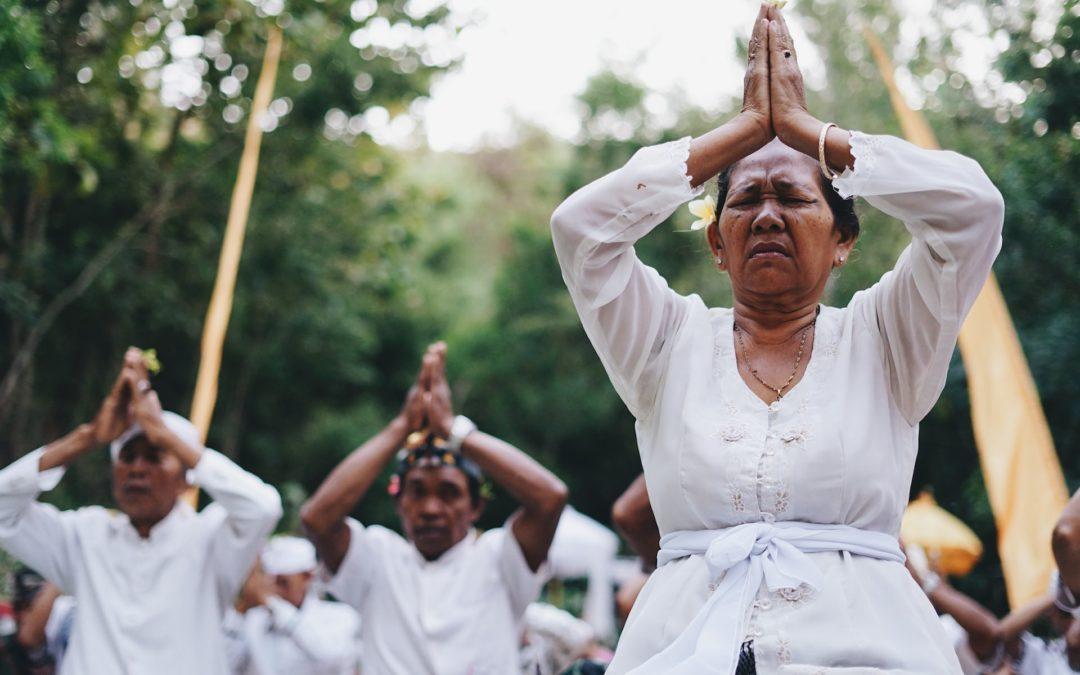Embarking on a journey through the rich tapestry of human culture unveils a fascinating array of customs that paint vivid portraits of societies worldwide. From intricate rituals that bind communities together to age-old traditions serving as guardians of cultural identity, customs offer a glimpse into the diverse ways people navigate their lives. In this exploration of 30 captivating examples of customs worldwide, we traverse the globe to witness the beauty, significance, and uniqueness embedded in these cultural practices. Each custom, a testament to the collective wisdom and heritage of its origin, unfolds stories of shared history, values, and the ever-evolving dynamics that shape the human experience. Join this exploration as we delve into the colorful mosaic of customs that reflect the kaleidoscope of our global cultural heritage.
What are Customs?
Customs refers to the traditional and habitual practices, beliefs, and behaviors that are specific to a particular community, society, or culture. These customs often hold significant meaning and value for the people who practice them, serving as a crucial part of their cultural identity and heritage. Customs can include a wide range of activities, such as rituals, celebrations, social norms, and even etiquette, each deeply ingrained in the cultural fabric of the community. They are typically passed down through generations, helping to preserve the history and values of the culture. Understanding and respecting customs is vital for appreciating the diversity and richness of different cultures around the world.
Customs also play a key role in marking important life events and transitions, such as births, marriages, and funerals, with specific practices and ceremonies that are unique to each culture. These traditions often involve specific rituals, music, dance, clothing, and food, reflecting the community’s historical and cultural background.
Beyond these significant life events, daily customs can include how people greet each other, the way meals are shared, or how decisions are made within a family or community. These practices not only foster a sense of belonging and continuity among community members but also offer a window into the values and priorities of the culture.
Furthermore, customs can evolve over time, adapting to changes in society and the environment, while still retaining their core significance. This evolution often happens as cultures interact and exchange ideas, leading to a dynamic and ever-changing cultural landscape.
In a globalized world, understanding and respecting the customs of different cultures is not only a matter of cultural sensitivity but also essential for effective cross-cultural communication and international relations. By acknowledging and appreciating the customs of others, we foster mutual respect and a more harmonious global community.
The Most Interesting Customs Examples
Namaste in India: A customary Hindu greeting where one presses their palms together and bows, saying “Namaste” to acknowledge the divine in each other.
Namaste, a traditional greeting deeply rooted in Hindu culture, is more than just a simple hello. When someone says “Namaste,” they bring their palms together in a prayer-like gesture and bow slightly. The essence of this custom lies in recognizing the divine spark or the inner light within everyone. It’s a beautiful expression that transcends mundane interactions, emphasizing a spiritual connection and mutual respect. In a way, Namaste goes beyond the surface level of meeting someone; it delves into the acknowledgment of the profound and sacred within each person, fostering a sense of unity and shared humanity.
Tea Culture in Japan: The Japanese tea ceremony, or “chanoyu,” emphasizes the preparation, serving, and drinking of matcha tea with profound attention to aesthetics.
The Japanese tea ceremony, known as “chanoyu” or “sado,” is a cultural practice that extends far beyond a simple tea-drinking ritual. It’s a choreographed performance, a meditative experience, and an art form in itself. The ceremony involves meticulous preparation, serving, and consumption of matcha, a powdered green tea. The emphasis on aesthetics is crucial, with every movement and gesture carefully orchestrated to create a harmonious and tranquil atmosphere. The ceremony isn’t just about quenching one’s thirst but is a profound expression of mindfulness, respect, and a celebration of the beauty in simplicity.
Maori Haka in New Zealand: The Haka is a traditional Maori war dance performed on various occasions, including weddings and funerals, to express a range of emotions.
The Haka is a powerful and dynamic Maori tradition, often witnessed in the form of a war dance but utilized on various occasions. It’s not merely a performance; it’s a visceral expression of emotions ranging from strength and unity to grief and defiance. When performed at weddings, the Haka becomes a symbol of love and support, showcasing the community’s involvement in the couple’s journey. In contrast, at funerals, it transforms into a poignant farewell, channeling collective sorrow and paying tribute to the departed. The Haka transcends entertainment; it’s a living, breathing embodiment of Maori culture, spirituality, and identity.
Kissing on the Cheek in France: A common form of greeting, the number of kisses may vary by region, ranging from one to four.
In France, greetings involve a delicate dance of cheek kisses known as “la bise.” While this custom might seem straightforward, the nuances are quite intricate. The number of kisses exchanged varies not only by region but also by personal relationships and the level of familiarity. It’s a social code that reflects warmth and familiarity, yet it maintains a certain level of formality. The act of kissing on the cheek is a tactile expression of connection, a social lubricant that bridges the gap between strangers and strengthens bonds among friends and family. It’s a cultural norm that brings a touch of intimacy to daily interactions, emphasizing the importance of personal connections in French society.
Eid al-Fitr Celebrations: After Ramadan, Muslims worldwide engage in feasts, prayers, and giving to the less fortunate as part of their celebrations.
Eid al-Fitr, the festival marking the end of Ramadan, is a joyous occasion that extends far beyond religious observance. It’s a time of celebration, reflection, and communal solidarity. After a month of fasting and spiritual introspection, Muslims come together to share festive meals, exchange gifts, and express gratitude. The act of giving to the less fortunate, known as “zakat al-fitr,” underscores the importance of charity and compassion. Eid al-Fitr is not only a religious celebration but also a cultural tapestry woven with the threads of generosity, empathy, and the joy of shared festivities.
Siesta in Spain: The afternoon nap is deeply ingrained in Spanish culture, allowing people to rest during the hottest part of the day.
The siesta, a cherished tradition in Spain, goes beyond a simple afternoon nap. It’s a cultural practice that harmonizes with the country’s climate and lifestyle. The scorching midday heat in Spain often makes outdoor activities challenging, prompting a break for rest and rejuvenation. The siesta isn’t merely a physical respite; it’s a cultural institution that reflects a slower pace of life, an appreciation for leisure, and a recognition of the importance of well-being. It’s a daily ritual that allows Spaniards to recharge, spend time with family, and indulge in the pleasures of a Mediterranean lifestyle, emphasizing the importance of balance amid a bustling world.
Midsummer Celebrations in Sweden: Swedes celebrate the longest day of the year with Maypole dancing, singing, and traditional foods.
Midsummer in Sweden is not just a date on the calendar; it’s a cultural extravaganza that brings communities together to celebrate the vibrant Nordic summer. The maypole, adorned with flowers and raised in the center of festivities, becomes a focal point for traditional dances and merriment. Songs, often with roots deep in folklore, are sung with gusto, connecting generations through shared melodies. Traditional foods, such as herring and fresh potatoes, symbolize the bounty of the season. Midsummer is more than a celebration of the longest day; it’s a testament to the Swedes’ connection to nature, their cultural heritage, and the communal joy found in embracing the warmth and light of the season.
Coming of Age Day in Japan: Celebrated on the second Monday of January, this day honors those who have turned 20, marking the age of adulthood in Japan.
Seijin no Hi, or Coming of Age Day, is a significant rite of passage in Japan, where individuals celebrate turning 20 and officially entering adulthood. The day is marked by ceremonies at local government offices, where new adults receive words of encouragement and advice. Traditional attire, such as the kimono for women and the hakama for men, is often worn during these celebrations, adding a touch of cultural significance to the occasion. Coming of Age Day is not just a personal milestone; it’s a societal acknowledgment of responsibility, accountability, and the transition into a new phase of life. It reflects the value placed on maturity and the expectations associated with contributing to the community.
Gifting Shoes in Arab Cultures: In some Middle Eastern countries, giving shoes is a gesture of respect, while displaying the sole of a shoe is considered rude.
In Arab cultures, the act of giving or receiving shoes carries a symbolic weight that extends beyond the material gift itself. Offering shoes to someone is a gesture of respect and hospitality, reflecting the idea that footwear, that touches the ground, is considered dirty. By presenting shoes to another person, you’re essentially elevating them and acknowledging their worth. On the flip side, displaying the sole of a shoe is deemed disrespectful. The sole is considered the lowest part of the body and exposing it, especially towards someone’s face, is considered offensive. This cultural nuance emphasizes the importance of gesture and posture in conveying respect and maintaining interpersonal harmony.
Tossing Bouquets in Weddings: A common wedding tradition where the bride throws her bouquet to unmarried guests, with the belief that the catcher will be the next to marry.
The tossing of the bridal bouquet is a time-honored wedding tradition that adds a playful and superstitious element to the celebration. As the bride throws her bouquet into a crowd of unmarried guests, the belief is that the person who catches it will be the next to marry. This ritual not only injects a sense of lightheartedness into the festivities but also symbolizes the sharing of happiness and love. It connects the bride’s joy to the hopes and aspirations of the single guests, creating a moment of anticipation and excitement that transcends cultural boundaries. Beyond its superstitious undertones, the bouquet toss underscores the communal nature of weddings, where joy and celebration are shared among family and friends.
Yum Cha in China: Yum Cha involves drinking tea and eating dim sum, emphasizing the social aspect of sharing food with friends and family.
Yum Cha, a Cantonese term that translates to “drink tea,” encapsulates more than just a simple tea-drinking ritual in China. It’s a cultural practice deeply rooted in the social fabric, bringing people together over a shared table of dim sum delights. The act of sipping tea becomes a communal experience, fostering conversations and connections. Dim sum, small and flavorful bite-sized dishes, further enhance the social aspect of Yum Cha. It’s not just about the flavors but the act of sharing, tasting, and enjoying the array of dishes with friends and family. Yum Cha is a celebration of both culinary artistry and the joy found in collective dining, reflecting the importance of relationships and togetherness in Chinese culture.
Dia de los Muertos in Mexico: A vibrant celebration honoring deceased loved ones with colorful altars, marigolds, and sugar skulls.
Dia de los Muertos, or the Day of the Dead, is a rich and colorful Mexican tradition that celebrates the lives of departed loved ones. Far from a mournful occasion, it’s a vibrant festival filled with music, dance, and elaborate altars adorned with marigolds, photographs, and the deceased’s favorite foods. Sugar skulls, intricately decorated with bright hues, are a symbol of remembrance and are often inscribed with the names of the departed. The belief is that, during Dia de los Muertos, the spirits of the deceased return to join the living in a joyous celebration of life. This unique blend of festivity and reverence creates a cultural tapestry that beautifully intertwines memory, love, and the acknowledgment of the inevitable cycle of life and death.
Eating with Hands in India: In many Indian households, eating with your hands is common and is seen as a more direct connection between the diner and the food.
In India, the act of eating with one’s hands is not just a cultural norm but a deeply ingrained tradition with roots in both practicality and spirituality. It’s a practice that extends beyond convenience; it’s a tactile and sensory experience that establishes a direct connection between the diner and the food. The fingers become an extension of one’s senses, allowing for a more nuanced appreciation of flavors and textures. Additionally, there’s a spiritual dimension to eating with hands, symbolizing a holistic approach to nourishment that involves not just the body but also the mind and spirit. It’s a cultural nuance that speaks to the intimate relationship between individuals and the sustenance they consume, emphasizing the importance of mindful eating and a harmonious connection with the culinary experience.
Tipping Culture in the United States: Unlike in some countries, tipping is customary in the U.S., usually around 15-20% in restaurants.
Tipping in the United States is not just a financial transaction; it’s a deeply ingrained social norm that plays a crucial role in the service industry. While in some cultures, service charges are included in the bill, the U.S. has a strong tipping culture where patrons are expected to leave a gratuity for services rendered. Tipping is not merely an acknowledgment of good service; it’s a significant source of income for many service workers. The customary range of 15-20% reflects a societal understanding of the value of service-oriented professions and the direct impact of gratuities on the livelihoods of those in the service industry. The act of tipping, therefore, becomes a tangible expression of appreciation for the quality of service received, creating a symbiotic relationship between patrons and service providers.
Thaipusam in Malaysia: A Hindu festival where devotees pierce their bodies with sharp objects as an act of devotion and to seek blessings.
Thaipusam, a Hindu festival celebrated primarily by the Tamil community in Malaysia, is a unique and visually striking expression of devotion. Devotees undertake a pilgrimage to fulfill vows made to Lord Murugan, the Hindu god of war. What makes Thaipusam particularly distinctive is the act of “kavadi-bearing,” where devotees carry elaborate structures, often adorned with peacock feathers and flowers, while some choose to pierce their bodies with hooks and skewers. This act of self-mortification is believed to demonstrate their dedication, seek blessings, and fulfill vows. Thaipusam is not only a religious observance but a testament to the lengths individuals are willing to go to express their faith and devotion, creating a vivid tapestry of spiritual fervor against the backdrop of cultural traditions.
Wassailing in England: An ancient tradition where people go from house to house singing and wishing good health to apple trees for a good harvest.
Wassailing is a centuries-old English custom rooted in agrarian practices and community spirit. During this festive tradition, groups of people move from orchard to orchard, often on Twelfth Night or New Year’s Eve, singing traditional songs and toasting the health of apple trees. The term “wassail” itself is derived from the Old English phrase “wes hal,” meaning “be in good health.” The ceremony involves pouring cider on the tree roots, leaving offerings like toast in the branches, and creating a joyful atmosphere to ensure a bountiful harvest in the upcoming year. Wassailing is not just a celebration; it’s a symbiotic relationship between the community and nature, blending ancient superstitions with a communal spirit that continues to endure.
Burning of Zozobra in New Mexico: A massive marionette is set on fire during the Santa Fe Fiesta to symbolize the burning of worries and troubles.
The Burning of Zozobra is a unique and cathartic event held during the Santa Fe Fiesta in New Mexico. Zozobra, often referred to as “Old Man Gloom,” is a giant marionette effigy that represents the collective worries and troubles of the community. In a symbolic act of catharsis, locals write down their troubles on pieces of paper, which are then placed inside Zozobra. As night falls, the massive puppet is set ablaze in a spectacular display of fire and fireworks, signifying the release of burdens and the cleansing of negative energy. The Burning of Zozobra is more than a fiery spectacle; it’s a communal ritual that unites people in a shared experience of letting go and starting anew, fostering a sense of renewal and community connection.
Bunun Ear Shooting Festival in Taiwan: A unique festival where participants showcase their marksmanship by shooting at targets with bows and arrows.
The Bunun Ear-shooting Festival in Taiwan is a distinctive cultural event that combines marksmanship with spiritual significance. Participants, often from the Bunun indigenous community, showcase their archery skills by shooting at wooden targets attached to the ears of a wooden effigy. The precision required reflects not only their prowess in hunting but also carries symbolic weight, representing a connection to nature and the ancestral spirits. The festival serves as a reminder of traditional hunting practices, fostering a sense of cultural identity and unity among the Bunun people. It’s a celebration where skill, heritage, and spirituality converge, offering a glimpse into the rich tapestry of Taiwan’s indigenous cultures.
Finnish Sauna Culture: Saunas are an integral part of Finnish life, where people relax, socialize, and even conduct business meetings.
Sauna culture in Finland goes beyond a mere bathing routine; it’s a cornerstone of Finnish lifestyle and social interaction. Saunas are ubiquitous and found in homes, offices, and even remote cabins in the wilderness. The practice involves not just cleansing the body but also serves as a communal experience where friends, family, and even colleagues come together. Saunas are spaces for relaxation, open conversations, and, surprisingly, even business meetings. The Finnish sauna etiquette emphasizes equality, as everyone, regardless of status, sheds their titles and enters the sauna as equals. The experience of moving between the hot sauna and a refreshing cold plunge, often in natural bodies of water, creates a holistic and rejuvenating ritual that encapsulates the essence of Finnish well-being and camaraderie.
Holi Festival in India: Also known as the Festival of Colors, Holi involves throwing vibrant powders at each other, symbolizing the triumph of good over evil.
Holi, the Festival of Colors, is a riotous celebration in India that transcends religious and cultural boundaries. Rooted in Hindu mythology, Holi commemorates the victory of good over evil, particularly the triumph of Lord Krishna over the demoness Holika. The festival is marked by exuberant revelry where people playfully drench each other in brightly colored powders and water. The kaleidoscope of hues symbolizes the diversity of spring, new beginnings, and the breaking down of social barriers. Holi is not just a visual spectacle; it’s a visceral experience of joy, unity, and the shared exuberance of life, reflecting the vibrancy and dynamism of Indian culture.
Mud Day in South Korea: On January 8th, South Koreans celebrate “Mud Day” where people play in mud for good health and beautiful skin.
Mud Day in South Korea is a unique celebration where people of all ages immerse themselves in the therapeutic benefits of mud. Held on January 8th, the day encourages participants to play and revel in mud baths for good health and beautiful skin. The tradition has its roots in the belief that mud, rich in minerals, has skincare and healing properties. Beyond its physical benefits, Mud Day fosters a sense of community and shared enjoyment. The festivities often include mud wrestling, mudslides, and other mud-based activities, creating a lighthearted and enjoyable atmosphere that reflects the Korean emphasis on well-being, communal joy, and the pursuit of beauty.
Día de los Santos Inocentes in Spain and Latin America: Similar to April Fools’ Day, people play pranks and jokes on each other on December 28th.
Día de los Santos Inocentes, observed on December 28th in Spain and many Latin American countries, is a day of humor and mischief akin to April Fools’ Day. Rooted in religious history, the day originally commemorated the innocent children slaughtered by King Herod in the biblical narrative. Over time, it transformed into a lighthearted occasion where people play pranks and jokes on friends, family, and even the media. The atmosphere is one of good-natured humor, with individuals attempting to outwit each other with clever and amusing hoaxes. Día de los Santos Inocentes is a cultural expression of mirth and camaraderie, where laughter becomes a shared language that transcends borders and brings people together.
Viking Funerals in Scandinavia: Historically, Vikings were laid to rest in ships, sometimes set ablaze, as a send-off to the afterlife.
Viking funerals in Scandinavia were elaborate and symbolic ceremonies that reflected the Norse belief in an afterlife filled with honor and glory. Deceased Vikings were often laid to rest in ships, surrounded by their possessions and sometimes accompanied by sacrificed animals or slaves. In some instances, the ship was set ablaze, serving as a dramatic send-off to the afterlife. This ritual symbolized the journey of the departed to the realm of the dead and their transition to the next life. Viking funerals were not just somber affairs but grand expressions of cultural and religious beliefs, emphasizing the importance of honor, bravery, and a glorious passage to the afterlife.
St. Patrick’s Day in Ireland and Beyond: Celebrated worldwide, this day honors Ireland’s patron saint with parades, wearing green, and revelry.
St. Patrick’s Day, observed on March 17th, is a global celebration of Irish culture and the feast day of St. Patrick, the patron saint of Ireland. While it holds religious significance, the day has evolved into a vibrant and joyous celebration marked by parades, wearing green attire, and revelry. The iconic shamrock becomes a symbol of the day, representing St. Patrick’s use of the three-leaved plant to explain the Holy Trinity. Beyond its Irish roots, St. Patrick’s Day has become a cultural phenomenon celebrated worldwide, fostering a sense of camaraderie, and Irish pride, and an excuse for people of all backgrounds to join in the festivities.
Carnival in Brazil: A spectacular celebration before Lent, featuring samba parades, vibrant costumes, and lively street parties.
Carnival in Brazil is a dazzling spectacle that captivates the world with its vibrant energy, samba rhythms, and elaborate costumes. Held before the Lenten season, Carnival is a grand celebration of life and exuberance. The festivities include massive samba parades featuring elaborate floats and costumed dancers, street parties, and an explosion of music and color. Carnival is more than just a party; it’s a cultural expression deeply rooted in Brazilian identity, with roots in Afro-Brazilian and indigenous traditions. The celebration transcends social and economic divides, bringing people together in a collective expression of joy, creativity, and the spirit of resilience that defines Brazilian culture.
Ghost Festival in China: Also known as the Hungry Ghost Festival, it involves offering food and burning incense to honor deceased ancestors.
The Ghost Festival, or Hungry Ghost Festival, is a significant event in Chinese culture that honors ancestors and restless spirits. Celebrated on the fifteenth day of the seventh month in the lunar calendar, it is believed that the spirits of the deceased are released from the underworld and roam the earth. Families engage in elaborate rituals, including the offering of food, burning incense, and lighting of lanterns to guide the spirits back to the afterlife. The festival reflects the deep Chinese cultural respect for ancestors, emphasizing filial piety and the belief in maintaining a connection with those who came before. The Ghost Festival is a poignant and spiritually significant time, blending religious beliefs with familial traditions.
Matryoshka Dolls in Russia: These nested dolls are a symbol of Russian culture and are often given as gifts, representing the layers of life.
Matryoshka dolls, with their charmingly painted exteriors and nesting design, are iconic symbols of Russian culture. Beyond their artistic appeal, these dolls carry deeper cultural symbolism. Each doll, when opened, reveals a smaller one inside, reflecting the concept of nested layers in life. The largest doll represents the outer self, while the smaller ones represent the different facets within. Matryoshka dolls are often given as gifts, symbolizing the layers of a person’s personality, the unfolding of life’s experiences, and the interconnectedness of existence. Beyond their aesthetic charm, Matryoshka dolls embody a profound metaphor that resonates with the complexity and richness of Russian culture.
Kumari Puja in Nepal: A tradition where a prepubescent girl is selected as a living goddess and worshipped during religious festivals.
Kumari Puja, a unique tradition in Nepal, involves the worship of a living goddess, the Kumari. Chosen from the Newar community, a prepubescent girl is selected based on strict criteria of purity and divine signs. The Kumari resides in the Kumari Ghar, the Kumari’s residence in Kathmandu Durbar Square. During religious festivals, she appears on the balcony to bless the devotees, adorned in traditional attire and with intricate makeup. The Kumari Puja represents the fusion of religious and cultural elements, embodying the belief in the divine feminine and the presence of the goddess within a young girl. The tradition reflects the deep reverence for spirituality and the seamless integration of mythology into everyday life in Nepal.
Wai in Thailand: The traditional Thai greeting involves a slight bow with pressed palms, showing respect and acknowledging social hierarchy.
The Wai is a traditional Thai greeting that transcends mere politeness; it is a deeply ingrained cultural gesture that reflects respect, humility, and social hierarchy. When offering a Wai, an individual places their palms together in a prayer-like fashion and bows slightly. The height at which the hands are held signifies the level of respect, with a higher position denoting greater respect for someone of higher social status or age. The Wai is not limited to greetings; it is a gesture used in various social situations, expressing deference and acknowledging the interconnectedness of Thai society. This elegant and nuanced form of greeting is a testament to the importance of hierarchy, courtesy, and mutual respect in Thai culture.
Cèilidh Dancing in Scotland: A social gathering with traditional Scottish music and dancing, fostering a sense of community and celebration.
Cèilidh dancing, deeply rooted in Scottish tradition, is more than just a series of lively dances; it is a social gathering that fosters a sense of community, camaraderie, and celebration. Accompanied by traditional Scottish music, Cèilidh dancing brings people together in a joyous expression of culture and shared heritage. The dances are often inclusive and accessible, encouraging active participation from attendees of all ages and skill levels. Beyond the steps and the music, Cèilidh dancing embodies the spirit of togetherness and the preservation of Scottish folk traditions. These gatherings serve as a cultural anchor, connecting Scots to their roots and providing a lively and spirited celebration of community life.
Why Customs are Important?
Customs are the invisible threads weaving through the fabric of society, binding generations and communities in a shared tapestry of practices and beliefs. Their importance in our lives can be as understated as it is profound. At their core, customs are the collective memory of a society, a living library of a culture’s journey through time. They are the rituals, traditions, and norms passed down, serving as an anchor in a rapidly changing world.
Think of customs as a language without words. They communicate values and beliefs, teaching us about respect, honor, and the importance of community. In a world where the pace of life is ever-accelerating, customs slow us down. They remind us to pause, reflect, and connect with our past. This connection offers a sense of identity and belonging, grounding us in a lineage that stretches back through the ages.
Customs are also a bridge. In a globalized world, where cultures meet and mix like never before, customs provide a window into the lives of others. Understanding the traditions of different communities fosters empathy and tolerance. It allows us to see the world through others’ eyes, to appreciate the diversity of human experience, and to find common ground in shared values and practices.
Moreover, customs play a crucial role in marking the milestones of life. From the joyous celebrations of birth and marriage to the solemn rituals of death, these traditions provide structure and meaning to life’s most significant moments. They help us navigate the complexities of human emotions, offering comfort and continuity in times of change and uncertainty.
Yet, as vital as customs are, they are not set in stone. They evolve, adapting to new environments and circumstances. This adaptability is one of their greatest strengths. It allows customs to remain relevant, providing continuity without stagnation. As societies change, so too do their customs, reflecting the dynamic nature of human culture.
In conclusion, customs are more than just quaint relics of the past. They are a living, breathing aspect of our present, shaping how we see ourselves and others. They teach us about where we’ve come from and guide us in where we’re going. In a world that’s constantly in flux, customs provide a sense of stability and continuity, reminding us that, no matter how far we travel, we are always connected to our roots.
How Do Customs Contribute to Cultural Identity?
Customs are integral to cultural identity, acting as dynamic threads that weave together traditions, beliefs, and practices within a community. Rooted in historical events and religious beliefs, these traditions serve as living testimonies to a culture’s experiences, values, and aspirations, providing a tangible link to its past. By adhering to and passing down these customs through generations, communities ensure cultural continuity and create a bridge connecting their heritage to the present. Additionally, customs play a crucial role in fostering a shared identity among individuals within a community, offering a sense of belonging and unity through active participation in cultural practices. In essence, customs are not static artifacts but living expressions that affirm the distinctive values shaping a community’s cultural identity.
How Are Customs Passed Down Through Generations?
Customs are transmitted across generations through a combination of oral traditions, demonstrations, and direct participation. Families, communities, and cultural institutions collectively contribute to the preservation and transmission of customs, ensuring their continuity from one generation to the next. The passing down of customs involves the sharing of stories, rituals, and practical experiences, often within familial and communal settings. Elders and community leaders play a crucial role in serving as custodians of this cultural knowledge, imparting the significance and intricacies of customs to younger generations. Through this intergenerational exchange, customs not only endure but also thrive as integral components of a community’s identity, reinforcing a sense of continuity and shared heritage.
Pros of Customs
Cultural Identity – Customs help define and maintain a community’s cultural identity, preserving unique traditions and practices that distinguish one group from another.
Social Cohesion – Customs foster a sense of unity and social cohesion by providing shared experiences, values, and rituals that bring individuals together, creating a sense of belonging.
Continuity and Heritage – Customs act as a bridge between generations, preserving cultural heritage and passing down values, ensuring continuity and a connection to the past.
Sense of Belonging – Engaging in customs provides individuals with a sense of belonging to a larger community, reinforcing shared values and creating a collective identity.
Social Order – Customs often dictate acceptable behaviors within a community, contributing to social order and cohesion by establishing norms that guide interactions and relationships.
Cultural Diversity – Customs contribute to the rich tapestry of global cultural diversity, showcasing the myriad ways in which different societies express their values, beliefs, and celebrations.
Ceremonial Significance – Many customs are associated with significant life events or milestones, providing a framework for celebrating achievements, rites of passage, and important moments in individuals’ lives.
Preservation of Knowledge – Customs often involve the transmission of knowledge and skills, ensuring the preservation of traditional practices, craftsmanship, and cultural wisdom.
Ritualistic Benefits – Engaging in customs and rituals can have psychological and emotional benefits, providing individuals with a sense of structure, purpose, and meaning in their lives.
Cultural Exchange – Customs can serve as a bridge for cultural exchange, fostering understanding and appreciation among diverse communities by sharing their unique traditions and practices.
Cons of Customs
Rigidity and Resistance to Change – Some customs may become rigid and resistant to change, hindering social progress and adaptation to evolving societal needs.
Exclusivity – Certain customs can contribute to exclusivity, creating barriers between different cultural or social groups and fostering a sense of superiority or inferiority.
Cultural Insensitivity – In some cases, customs may be rooted in cultural insensitivity or discriminatory practices, perpetuating stereotypes or discriminatory behaviors.
Stagnation – The strict adherence to customs without room for evolution can lead to cultural stagnation, hindering innovation, and adaptability to changing circumstances.
Conflict with Modern Values – Some customs may conflict with modern values, leading to tension between traditional practices and contemporary societal expectations.
Gender Inequality – Certain customs may perpetuate gender inequality by enforcing traditional roles and expectations for men and women, limiting opportunities for both genders.
Isolationism – Excessive focus on customs can lead to cultural isolationism, hindering opportunities for cross-cultural understanding and collaboration.
Pressure to Conform – Individuals within a community may feel pressured to conform to customs, limiting personal expression and diversity of thought.
Cultural Appropriation – Customs may be at risk of cultural appropriation, where elements are borrowed or taken out of context, leading to the dilution of their original cultural significance.
Religious Conflict – Some customs have strong religious associations, and differences in religious beliefs can lead to conflicts or misunderstandings within diverse societies.
Can Customs Change Over Time?
Indeed, customs are not immutable entities but are subject to change over time. This dynamic nature allows them to adapt in response to evolving societal, economic, and technological landscapes. The degree of change, however, is variable, and while some customs transform to align with contemporary contexts, others may endure relatively unchanged forms for extended periods. This adaptability underscores the resilience of customs, highlighting their capacity to reflect and respond to the ever-shifting dynamics of human societies while also emphasizing the enduring aspects that anchor them in tradition.
Read also: Top 30 Examples of Mood: Definition & Guide
The Most Popular on BitGlint

40 Social Dilemma Examples in the World & Real Life
Social dilemmas are everywhere. They shape the choices we make at work, in our communities, and even on a global...

30 Favor Examples & Definition
Doing a favor means helping someone without expecting anything in return. It’s an act of kindness that can strengthen...

30 Naivety Examples & Definition
Naivety is something most people experience at some point in their lives. It often starts in childhood, but for some,...

20 Chronology Examples & Meaning
Chronology is something we use more than we realize. It shows up in conversations, in how we remember the past, and in...

30 Wishful Thinking Examples & Meaning
Wishful thinking is something we all do at some point. You hope things will turn out fine—even if there’s no real...

20 Examples of Gravity & What Gravity Really Is
Gravity is one of the most important forces in the universe, but many people don’t fully understand what it really is...

20 Examples of Secondary Consumers in the Food Chain
Secondary consumers are animals that eat other animals—usually herbivores that feed on plants. They’re an important...
Get Inspired with BitGlint

